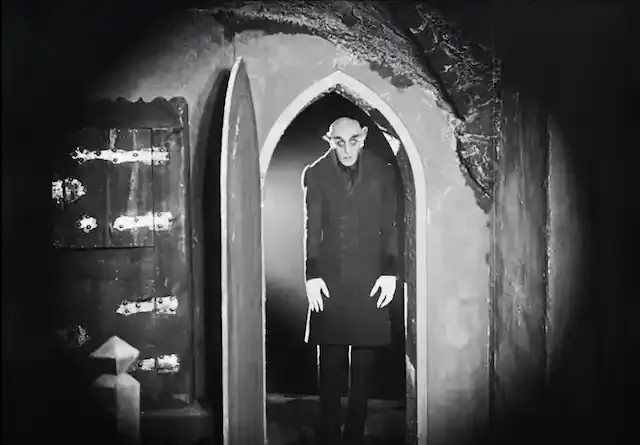Nosferatu (1922)
Welcome to my new (and hopefully ongoing) Friday afternoon movie review. These reviews will be, of course, in Blind Skeleton style, so will be old black and white movies, silent movies, and movies otherwise rarely seen today. I like to do these on Friday so if you're looking for something to do this weekend, perhaps you'll choose one of these.
Nosferatu is a 1922 silent film directed by F. W. Murnau and loosely based on Bram Stoker's novel Dracula. It is widely regarded as one of the most influential and groundbreaking horror films of all time, as well as a masterpiece of German Expressionism.

This early cinematic venture into the realm of horror showcases how minimalistic yet creative approaches can evoke a pervasive sense of dread. The German Expressionist movement, characterized by its distorted stylistics and shadow play, serves as a fertile ground for Murnau's eerie narrative to unfold. The thematic undercurrents of existential fear and the unknown are amplified through the film's surreal and distorted visuals, making Nosferatu a hallmark in the thematic evolution of horror cinema.
The film tells the story of Count Orlok, a vampire who travels from Transylvania to Germany to prey on the innocent. He is pursued by Professor Van Helsing, a vampire hunter who knows his secrets. Along the way, Orlok encounters Hutter, a real estate agent who unwittingly invites him to his home, and Ellen, Hutter's wife who becomes Orlok's obsession.
Beyond the superficial horror of a blood-thirsty vampire, Nosferatu explores the darker aspects of human nature and the consequences of naive curiosity. The characters of Hutter and Ellen portray the tragic human element, while Van Helsing's relentless pursuit of evil reflects the perennial struggle between good and evil. The juxtaposition of these human experiences against the ominous backdrop of Orlok's malevolent intentions provides a rich tapestry of narrative intricacies.
The film is notable for its striking visuals, atmospheric music, and eerie performances. The actor who played Orlok, Max Schreck, was so convincing in his role that some rumors suggested he was a real vampire. His appearance, with long claws, pointed ears, and rat-like teeth, has become iconic in the genre. The film also uses innovative techniques such as shadows, negative images, and fast motion to create a sense of horror and suspense.
The legacy of Nosferatu undeniably lives on through Max Schreck's bone-chilling portrayal of Count Orlok. His performance has become a blueprint for the depiction of cinematic vampires, influencing countless films within and beyond the horror genre. Moreover, the artistic use of shadows and negative imaging not only adds a layer of visual aesthetics but also significantly contributes to the storytelling, creating a foreboding atmosphere that persists throughout the narrative.
The film was almost lost to history, as it faced legal issues due to its unauthorized adaptation of Stoker's novel. The estate of Stoker sued Murnau and ordered all copies of the film to be destroyed. However, some prints survived and were restored over the years. The film is now widely available and has been recognized as a cultural and historical treasure.
The tumultuous journey of Nosferatu from near oblivion to its revered status is a fascinating tale of cinematic resilience. The legal adversities it faced inadvertently highlighted the film's cultural value, igniting the curiosity of film enthusiasts. The restoration efforts reflect the collective appreciation and responsibility towards preserving seminal works of art that significantly contribute to the global cinematic heritage.
Nosferatu is a film that transcends its time and medium. It is a testament to the power of cinema and the imagination. It is a film that will haunt you long after you watch it.
The enduring allure of Nosferatu lies in its ability to resonate with audiences nearly a century after its release. Its thematic depth, coupled with its innovative storytelling techniques, continues to inspire filmmakers and horror aficionados alike. Nosferatu doesn't merely scare; it invites viewers into a haunting, expressionistic world that explores the primal fears of humanity, making it a timeless piece in the annals of horror cinema.
(c) All images and photographs, unless otherwise specified, are created and owned by me.
(c) Victor Wiebe
Blind Skeleton
Online Radio! 24x7 of OTR classics:
The Skeleton Brew coffee shop is open!

I love This kind of movie because it is very interesting. Thanks for the recommendation
I love the old movies! The technology they had to work with was so basic they had to rely on storytelling. It led to some very imaginative movies.